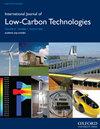储能系统高性能锂离子电池均衡策略
IF 2.3
4区 工程技术
Q3 ENERGY & FUELS
引用次数: 0
摘要
为了追求低碳生活,可再生能源的广泛应用,加速了锂离子电池的发展。电池均衡是锂离子电池的一项关键技术,由于电池端电压易于获取,一种简单可靠的电压均衡控制策略被广泛采用。但在用电池电压来判断电池是否需要端均时,往往不能很好地反映充电状态,造成电池管理系统误判,使其无法达到较好的均化效果。本文提出了一种基于一般均衡策略的均衡数据的高性能均衡控制策略,该策略在均衡完成后重新开启均衡,并以均衡时间代替电池电压作为指标。本文对这一原理进行了详细的分析和测试。均衡电池的最终电压与目标电压的差值仅为4 vs 3 mV,与一般均衡策略的误差18 vs 24 mV相比,具有极大的优势,并且几乎不增加工作量,具有良好的应用前景。本文章由计算机程序翻译,如有差异,请以英文原文为准。
High-performance lithium-ion battery equalization strategy for energy storage system
Abstract In pursuit of low-carbon life, renewable energy is widely used, accelerating the development of lithium-ion batteries. Battery equalization is a crucial technology for lithium-ion batteries, and a simple and reliable voltage-equalization control strategy is widely used because the battery terminal voltage is very easy to obtain. But when the battery voltage is used to determine whether the battery needs to end equalization, it often does not reflect the state of charge well, resulting in battery management system misjudgment, which makes it unable to achieve a better equalization effect. In this paper, we propose a high-performance equalization control strategy based on the equalization data of the general equalization strategy, which turns on the equalization again after the equalization is completed and uses the equalization time instead of the battery voltage as the indicator. In this paper, we analyse and test this principle in detail. The difference between the final voltage of the equalized battery and the target voltage is only 4 versus 3 mV, which is an extreme advantage compared with the error of 18 versus 24 mV of the general equalization strategy, and it adds almost no workload, which makes it a good prospect for application.
求助全文
通过发布文献求助,成功后即可免费获取论文全文。
去求助
来源期刊

International Journal of Low-carbon Technologies
Engineering-Architecture
CiteScore
4.30
自引率
4.30%
发文量
106
审稿时长
27 weeks
期刊介绍:
The International Journal of Low-Carbon Technologies is a quarterly publication concerned with the challenge of climate change and its effects on the built environment and sustainability. The Journal publishes original, quality research papers on issues of climate change, sustainable development and the built environment related to architecture, building services engineering, civil engineering, building engineering, urban design and other disciplines. It features in-depth articles, technical notes, review papers, book reviews and special issues devoted to international conferences. The journal encourages submissions related to interdisciplinary research in the built environment. The journal is available in paper and electronic formats. All articles are peer-reviewed by leading experts in the field.
 求助内容:
求助内容: 应助结果提醒方式:
应助结果提醒方式:


